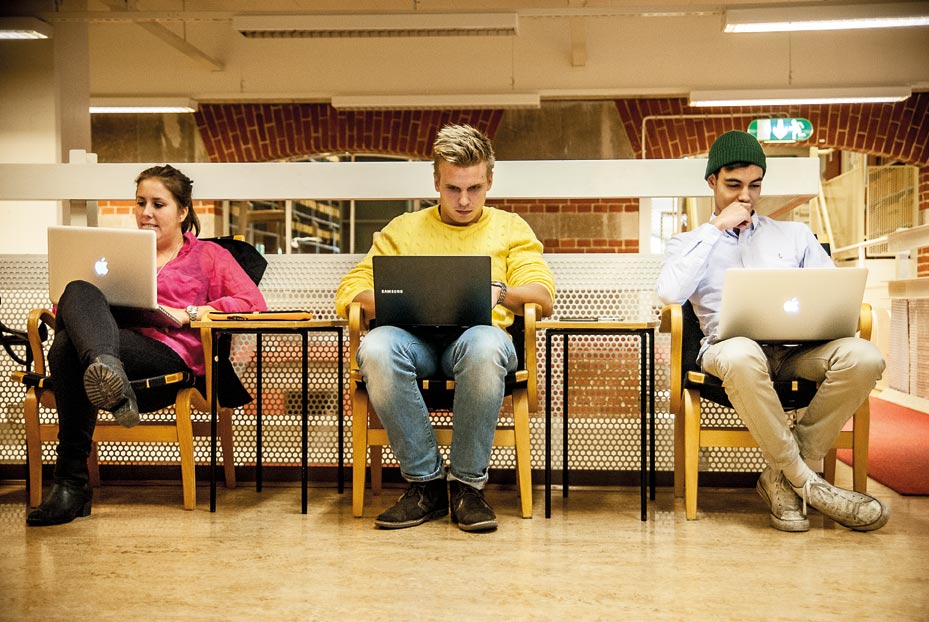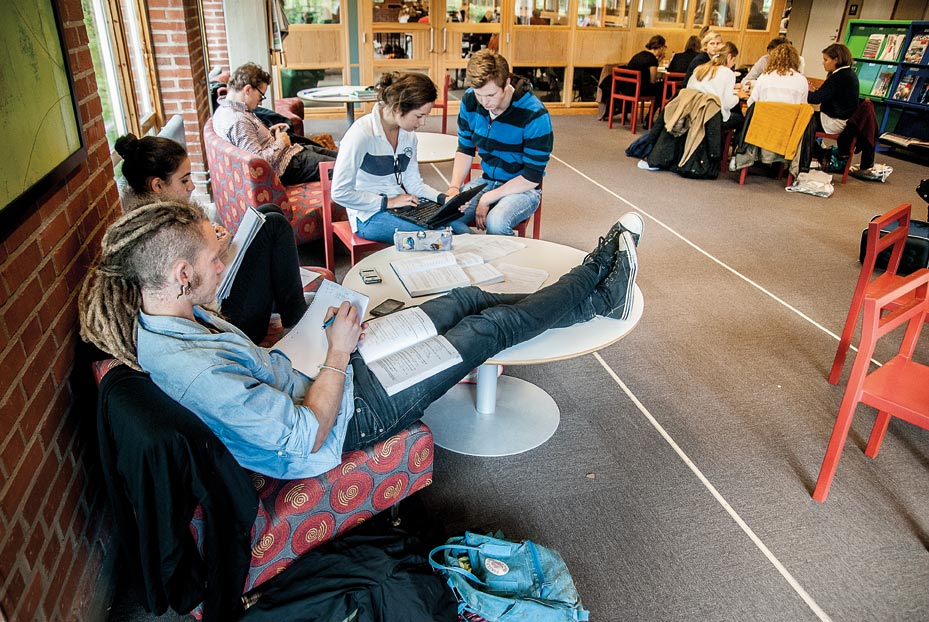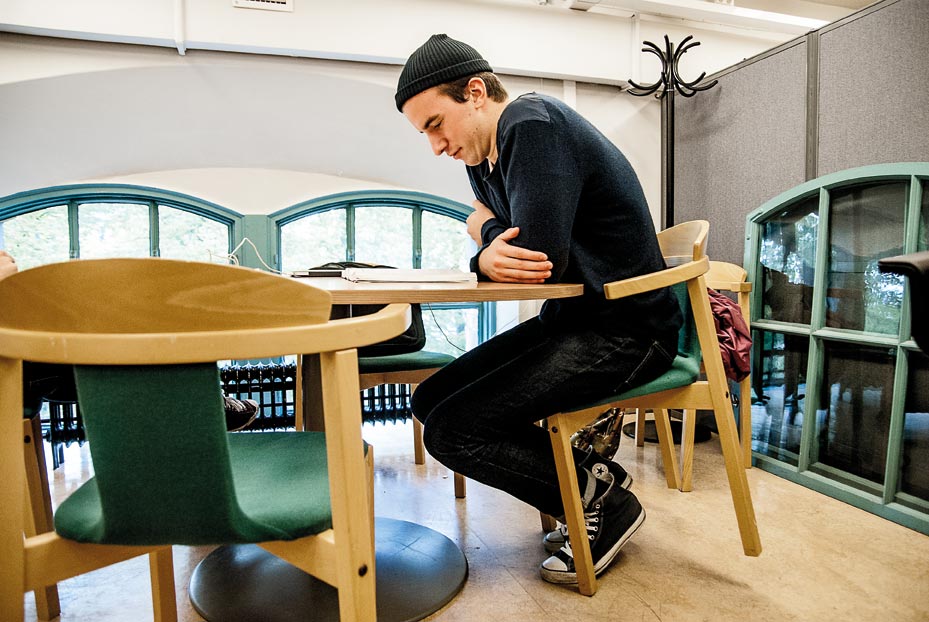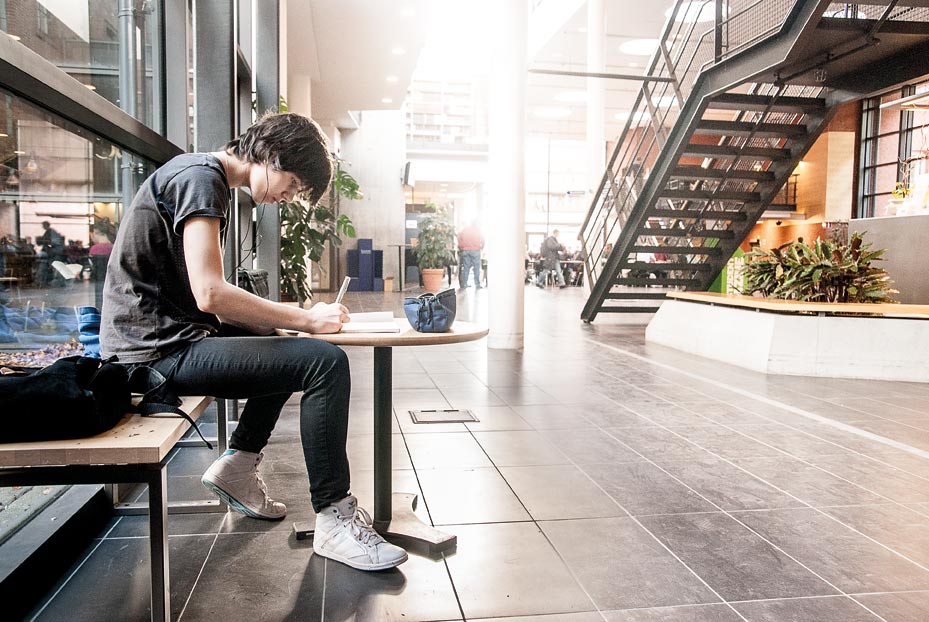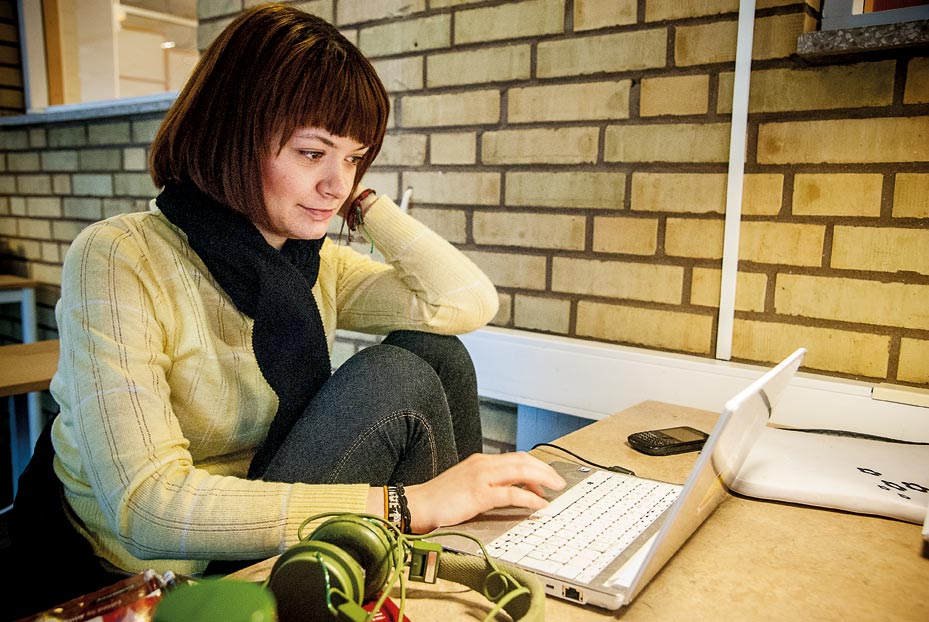Frenetically writing on the laptop, slackly bent over a book or with the pipette poised. There are many ways to study and all of them put strain on your body in some way. Lundagård has found out how you sit properly.
As a student you often sit in the same posture several hours a day, something that affects the body. Klas Andersson and Anne Link are physiotherapists focusing on ergonomics at the occupational health service at Lund University and are concerned about how people strain their bodies in the wrong way.
“By sitting ergonomically you avoid getting long-term repetitive strain injuries”, says Klas Andersson.
“Musculo-skeletal disorders could wait 10 to 15 years before they show. Then again it is very individual how heavy a strain it takes to get injured”, says Anne Link.
Ergonomics is about adjusting the human according to the environment and the environment according to the human. About using the body in the right way when working. In that way pains in joints and muscles that otherwise would be strained to a great extent and in the wrong way are avoided.
For students there are several situations to be observant of. When you are using a desktop computer there is a risk of getting a mouse elbow. Coming and going to the lecture heavy bags filled with books carried in a shoulder bag could injure the nape of the neck and the shoulders. Students should also have a good sitting posture during reading to avoid putting strain on the nape of the neck. In a laboratory environment it is important to think of how you sit in front of the microscope and how you are using a pipette.
However, it is not only the body-postures that lead to repetitive strain injuries.
“Stress makes the musculo-skeletal disorders worse. Research shows that having a high level of stress there is a 50 per cent higher risk at getting musculo-skeletal disorder. At a high level of stress tension is increased in the muscles, which increases the level of strain. Many students can get better at planning their time to decrease the level of stress”, says Anna Link.
At present the new LUX-building is built near Sölvegatan and in December Eden will be renovated. When the halls of the university are furnished there is the possibility of using the competence of the ergonomists at the university to furnish the halls more ergonomically.
“It is a good thing that the university invests more in study environments, but there’s a need for an extended ergonomic thinking. For example, all chairs are not ideal to sit on for longer periods of time”, says Anne Link.
“We are seeing an increased interest in ergonomic aspects today compared to seven years ago when I started as an ergonomist at the university, which feels good. But it is difficult to introduce ergonomic seats all over the university. Already in pre-school and during childhood the wrong kinds of chairs are used and it’s difficult to break a pattern like that”, says Klas Andersson.
“Economy sometimes throws spanners into the works. Ideally there should be electric vertically adjustable tables in all computer rooms, but then you have to put that in proportion to how often students use it. It is a matter of money”, says Anne Link.
Text: Carl-Johan Kullving
Photo: Henrik Larsson
Translation: Mia Söllwander
Frida Hildingsson, 22 years old and studying Systems Science.
“I don’t think of how I sit, instead it is often what is most comfortable. “
Robin Storgren, 21 years old and studying Systems Science.
“Usually we sit at a table doing group work, but now we were supposed to read through the text and so we chose to sit in these armchairs instead.”
Esmail Mehdy, 19 years old and studying Systems Science.
“These chairs are good. They become more comfortable since they have armrests to lean your elbows on”.
The ergonomist’s comment: The chairs lack support for the curve of the back, which puts an unfavourable strain on the discs of the back. The boys are sitting too low, which intensifies the risk of pains. A head bent forward results in heavy strains on muscles and ligaments in the lower part of the nape of the neck. This could cause headaches.
Dante Torén:, 22 years old and studying Environmental Engineering.
“The table is so low that it’s not comfortable to sit bent forward studying. I’m not usually thinking of sitting ergonomically, on the contrary I do sit normally in study rooms.”
The ergonomist’s comment: Bad support for the curve of the back. Most of the people in the photo sit with the nape of the neck substantially bent forward.
Philip Bergström, 22 years old and studying Economics.
“Have no idea why I do sit like this. However, I often hear that I sit with my legs towards each other. Therefore I’m now bending forward instead.“
The ergonomist’s comment: If the strain on the shoulder/shoulder-joint is heavy it affects both joints and adjacent muscles. The position of the head is bent forward and gives a heavy strain on muscles and ligaments in the lower part of the nape of the neck. This could cause headaches.
Dominic Dominiuk, 21 years old. Studying Japanese
Right now I’m colouring because I have a gap between lessons. There are actually better tables to sit at while drawing, but there wasn’t any available. I studied at a comic-strip school before where we had ergonomic exercises practising to sit up straight, but you don’t always do that anyway.
The ergonomist’s comment: The heaviest strain is on the lower part of the nape of the neck, as well as on joints, muscles and ligaments.
Mariette Sorensen, 23 years old. Studying Peace and Conflict Studies.
“It is more comfortable to sit like this. I concentrate better and I also sit like this during lectures. I often start by sitting “correctly”, but always change my posture after a while.“
The ergonomist’s comment: The knee joints are strained in an outer range. The lumbar region ends up close to its outer range when bending forwards and rotating. The discs of the vertebras are exposed to heavy strain in this position. The blood circulation in the legs is impaired.
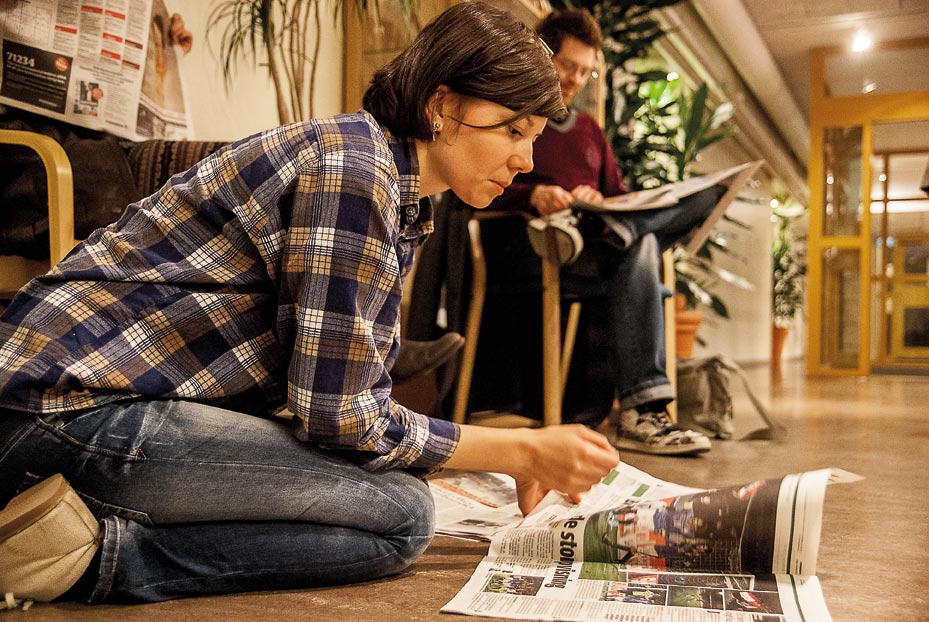 Linnéa Nordh-Källberg, 25 years old and studying Political Science.
Linnéa Nordh-Källberg, 25 years old and studying Political Science.
“I like sitting on the floor. At home I have a carpet to sit on it is more comfortable. I should really be sitting better because I have a bad posture, for example I often sit with my laptop in bed which isn’t that good. “
The ergonomist’s comment: Knee and foot joints are being strained in maximal outer range under relatively heavy strain. In this posture you strain the cartilage in the knee joint where it’s thinnest. The relief of the pressure on the arms is good.

